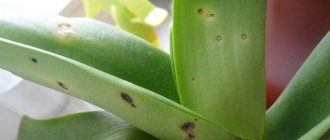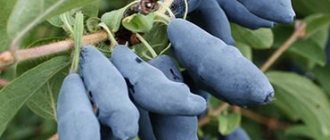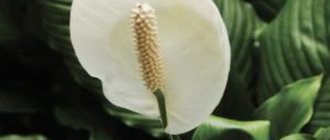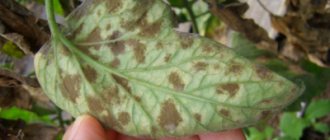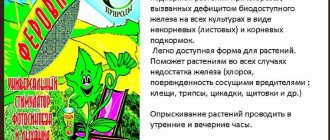What kind of disease is this?
Tomato mosaic is a viral disease. It is very resistant to external influences. Over three hundred different plants can become sources and spreaders of the disease. These include:
- potato;
- beet;
- eggplant;
- pepper;
- spinach;
- tomatoes, etc.
In most cases, mosaic affects varieties grown from seedlings. This is due to the fact that they are exposed to a large number of agricultural practices, which contributes to the spread of the disease.
The causative agent of mosaic in tomatoes is a virus called Tobacco mosaic tobamovirus. The source of this pathogen can be contaminated seeds and even soil.
The disease can spread by getting the juice of an infected plant onto a healthy bush and transmitting the infection by insects, such as:
- cicadas;
- aphid;
- thrips.
Signs
Symptoms of mosaic in tomatoes can vary. It depends on the degree of infection, the type of disease, and growing conditions.
The main signs of mosaic disease in tomatoes are as follows:
- Withering. This process is observed in the first seven days after infection.
- Loss of elasticity. This symptom is observed when intensive plant growth occurs during a period of significant solar radiation. After a cold snap, the plant recovers.
- Change of color. It can range from pale or colorless to bright yellow and green. In this case, well-defined areas of affected tissue can be seen on vegetables.
- Folding. The leaf blades grow unevenly. This process is more intense in the upper part of the plant.
Other common symptoms of mosaic include deformed leaves. Often their plates are reduced to such a size that the bush can become like a fern. Some parts of it resemble long threads.
Darkening appears inside the fruit. As a rule, it appears near the calyx of the fruit in the form of gray-green areas. Subsequently, these areas grow, including the top of the fruit. Following this, tissue death occurs. This process leads to the appearance of a brown mesh on the fruit. It is clearly visible through the skin of tomatoes.
Causes
The main sources of the virus that causes mosaic in tomatoes:
- infected seeds;
- soil with pathogen spores;
- remains of diseased plants.
The spread of infection occurs in this way:
- While caring for plants. The pathogen can be transmitted through the gardener's tools or clothing.
- Through mechanical damage. Violation of the outer protective shell of the plant leads to the fact that the virus can get inside.
- With the help of insect pests. They are present in large numbers in gardens, spreading the infection quite quickly.
- Due to violations of the rules for carrying out agricultural activities.
A favorable environment for the spread of infection is insufficient lighting of tomatoes. The pathogen is viable in the garden for 22 months.
Tobacco mosaic virus on plants
There are many problems associated with caring for nightshades. And the most common of them is the tobacco mosaic virus - green mottle. Virus infection involves the immediate decomposition of chlorophyll (the green pigment of the plant) and, as a result, the complete cessation of photosynthesis. This process can no longer be stopped, which ultimately leads to the death of the culture. To protect peppers, tomatoes, cucumbers and even tobacco, it is necessary to recognize the tobacco mosaic virus in time, how to treat the plants and how to prevent its development.
Varieties, photos
Today, there are two main types of mosaic in tomatoes - tobacco and pepino. They are not significantly different from each other.
Tobacco
This disease accounts for up to 20% of tomato losses worldwide. Main signs of the disease:
- fruit spotting;
- the appearance of yellow spots on the leaves;
- tissue necrosis (death);
- deformation of various parts of plants.
Often, during infection with tobacco mosaic, tomatoes are exposed to other infections. As a result, they begin to lag behind in development. The fruits lose their presentation and decrease in volume.
Pepino
This type of mosaic is the most dangerous. It causes fruit marbling and some other pathological changes such as
- chlorosis;
- nettle-like apexes;
- yellow leaf spot;
- mosaic leaves;
- appearance of brown cups.
Pepino mosaic causes uneven ripening of fruits, cracking, and blistering of leaves. Look at the photos of tomatoes with signs of disease:
Symptoms of viral infection on tomatoes
Having noticed the first signs of a viral disease, remove diseased plants from the beds to prevent the spread of the disease.
Summer residents notice the first symptoms on the leaves of the plant. The leaf blades become covered with a peculiar mottling, which subsequently takes on the appearance of a mosaic of light or dark green color.
At the same time, deformation of the leaves occurs - they become deformed, acquire a thread-like shape, and wrinkle. On the underside, cup-shaped outgrowths up to 1 cm in size, resembling leaves, are formed. This is the clearest sign of tomato infection by enation mosaic virus (
How does a viral disease develop and why is it dangerous?
Mosaic can be spread both in greenhouses and in open areas. You can see the first signs of the disease in mid-June. During this period of time, the growth of bushes partially or completely stops.
The process of disease development is as follows:
- Initially, the tops of the bushes become thinner and curl.
- The color of the leaves changes from green to yellow-green.
- Gradually the leaves begin to resemble lace. Spots or necrotic areas may appear on petioles and stems.
- The fruits begin to ripen unevenly and crumble.
- Some tomatoes growing closer to the ground may have brown or yellow areas.
- Browning often spreads to the inside of the tomatoes, which becomes like a mesh.
The danger of mosaic is due to the fact that this disease can spread easily. The disease leads to a significant reduction in the volume of harvested crop. Those fruits that can still be saved do not have a marketable appearance. They may be small in size. On their surface, as a rule, yellow or brown spots are clearly visible.
How to fight?
Plants that have been infected with mosaic cannot be saved. Currently, there are no remedies that would completely get rid of this disease. The gardener's task is to strengthen the protective functions of tomatoes.
To combat mosaic, chemical and biological agents are used such as:
Novosil. This remedy is a natural immunostimulant.
Its main functions are stimulating seed germination and strengthening the root system. In addition, the drug destroys some viral diseases. In Novosil it is necessary to soak the seeds. To do this, just 3 drops of the drug per 3 liters of water is enough. The seeds are kept in the solution from evening to morning, then the water is drained. When spraying plants during their intensive growth, you will need 5-15 drops of the product per 3 liters of water. You need to spray once every 2-3 days for a week.Immunocytophyte. This remedy increases resistance to diseases.
In addition, it stimulates the growth of tomatoes. When treating seeds, you need to prepare a solution using 1 tablet per 1 tablespoon of water. This volume is enough to soak 5 grams of seeds. To treat plants, you need to soak the tablet in 1 tablespoon of water, then add the resulting solution to 2 liters of water. The solution is used to treat plants during the period of active growth from 1 to 5 weeks after planting.Boric acid. To treat seeds, you need to use 0.5 grams of this product per 1 liter of water. To spray plants, use 1 gram of the drug per 1 liter of water. Spraying is carried out no more than twice a week (in the evening).
- A package of Novosil costs about 1,500 rubles.
- Immunocytophyte can be purchased for 68 rubles.
- Boric acid has a low price - only 8 rubles per package.
Preventive spraying of seedlings
Protective spraying of plants begins while growing seedlings. To do this, 1 liter of whey, low-fat kefir or skim milk is diluted in 10 liters of warm water.
The work is carried out with a home sprayer, completely wetting the leaves and stems of the tomatoes. As a result, a thin film is formed on the surface of plants, which prevents the contact spread of the virus.
The first treatment is carried out the day before picking, the last - the day before planting the seedlings in the ground. The interval between spraying should not exceed 8 days.
5-7 days before planting seedlings, spray with a 0.05% solution of boric acid.
During the season, tomatoes are sprayed 4 times with solutions:
- 0.05% boric acid;
- 0.01% cobalt nitrate;
- 0.01% copper sulfate.
Treatment is carried out in the evening hours with an interval of 15-20 days.
Prevention measures
Basic methods for preventing mosaic in tomatoes:
- After the first signs of the disease appear, infected plants must be destroyed.
- It is prohibited to collect seeds of diseased tomatoes.
- Crop rotation must be observed.
- When carrying out agricultural activities, it is necessary to treat the tool with alcohol or potassium permanganate.
- After the end of the harvest season, it is necessary to disinfect the walls of the greenhouse.
- Every year in the greenhouse it is necessary to change the top layer of soil 10-15 centimeters thick.
- Smoking is prohibited in the greenhouse.
- The plant must receive a balanced diet.
- Weeds and pests should be constantly controlled.
The above preventive measures do not completely eliminate the disease, but significantly reduce the possibility of its occurrence and spread.
Treatment methods
Gardeners who have diagnosed the disease in their garden beds are interested in how to combat the disease in greenhouses. However, it is impossible to cure an already diseased bush with serious damage. Control methods include pruning the affected parts of the plant at the first sign of disease, removing and destroying bushes with late stages of infection, and then treating to protect the remaining plantings.
It is believed that potassium is effective against illness in greenhouses. It will help rather for prevention: they fertilize tomatoes with it and reduce the amount of nitrogen fertilizers. The mineral permanganate is used to treat soil and seeds.
Having gotten rid of diseased bushes, healthy ones and those in the early stages of the disease are sprayed with a solution of 1 liter of milk or whey in 10 liters of water. Treat weekly until the leaves acquire a normal shade.
Prepare a 0.05% solution of the drug and spray the beds.
75 g of the drug powder is dissolved in 10 liters of water. Treat the entire bush and repeat after 10 days. The remedy is effective in the early stages.
Prepare a solution of milk and water in a ratio of 1:10, pour in 10 drops of iodine.
Spray tomatoes at weekly intervals.
They are prepared according to the instructions and process the plants while wearing glasses and gloves.
Are there tomato varieties resistant to this virus?
Full or partial resistance to mosaic is demonstrated by the following tomato varieties:
- Charisma F1;
- Vologda F1;
- Ural F1;
- Alaska F1;
- Firebird F1.
There are also other varieties that are less susceptible to the disease.
Mosaic in tomatoes is a very common disease that can significantly reduce the volume of the harvest, while worsening the appearance of the fruit. That is why it is very important not only to prevent infection, but also to respond in time to the first manifestations of the disease.




